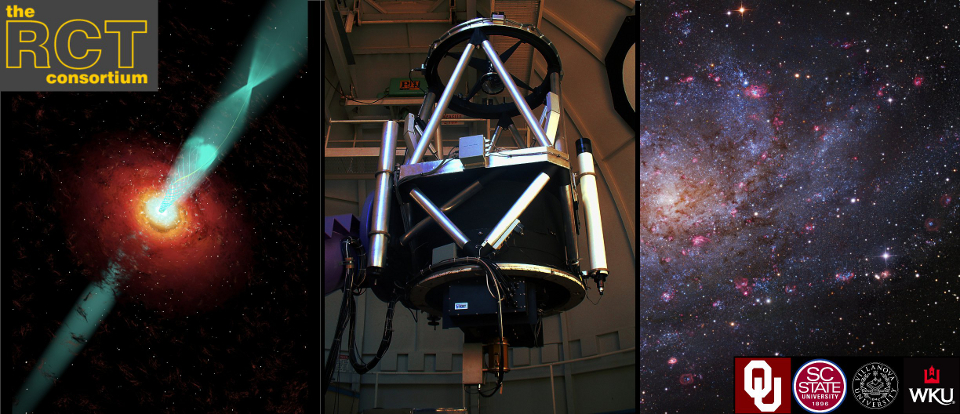The vaisala weather station is not responding. The telescope will be down for at least a few days until the station can be inspected.
Updated RCT blog
Folks,
I’ve updated the RCT webpage to highlight science. I’ve moved the telescope maintenance issues and bugs to a separate location on the site, but you will still get posts will still get to the RSS. Please review and let me know if have suggestions or comments.
Villanova’s Living with a Red Dwarf Program
Because of their slow nuclear fusion rates, dM stars undergo almost negligible changes in temperature or luminosity over time, making traditional age determination methods (such as isochronal fits) essentially impossible.
There is, however, one property of dM stars that does noticeably change over time – the strength of their magnetic fields. As dM stars (along with K- and solar-type G-stars) age, they undergo the “spin-down” effect, where the rotation period lengthens over time. This is a quantity that can be directly measured and then calibrated as a “dating method” or “aging method.” The problem has been the need to calibrate a relationship between stars of known rotation periods and stars of known ages. The database of dM stars with reliably known ages has long been limited but, recently, two separate studies published by Garces et al. and Zhao et al. in 2011 furnished a nice list of dM stars with white dwarf companions. Recent work has allowed for much more reliable white dwarf ages to be determined, and that age can be assigned to the companion dM star through association. We’ve been observing as many of these guys as we can with the RCT. I’m attaching a couple lightcurves we’ve obtained so far and also our Rotation over Time graphs, where the red points show rotation rates derived from RCT photometry. The results of the program so far have been pretty exciting.
RCT Chip orientation fixed
The chip orientation has been erroneous since moving to amp=C a long while ago. The chip orientation should now be correct with North=Left East=Down.
Focus adjusted
The focus was off last night. I’ll interrupt the queue at the beginning of tonight to re-calibrate it.
New UPS ordered
The new building UPS has been ordered and is en route.
A few servicing issues resolved
Brevin went up last night (6/22) to do a quick servicing on the mirror support compressor, the axis video system, and the oculus camera control computer. In short, all issues are fixed, and the telescope is back to normal operations. Please check images from tonight (6/23) to insure that the telescope is functioning properly. Please reply to this message, or email me personally, if you still find issues. Details on each issue are below.
Camera control machine down
The camera control computer is not responding following a loss in power on July 20. Brevin has been alerted.
Powerout 06/18/2012
RCT experienced a power out at 00:10 local time. Telescope was restarted and homed at 11:00 mountain.
Blank images?
Several images the last few nights are blank. I suspect the dome encoders are off, and have re-homed the encoder. Please send comments if your images are still blank.

